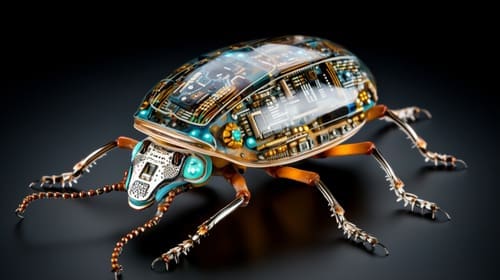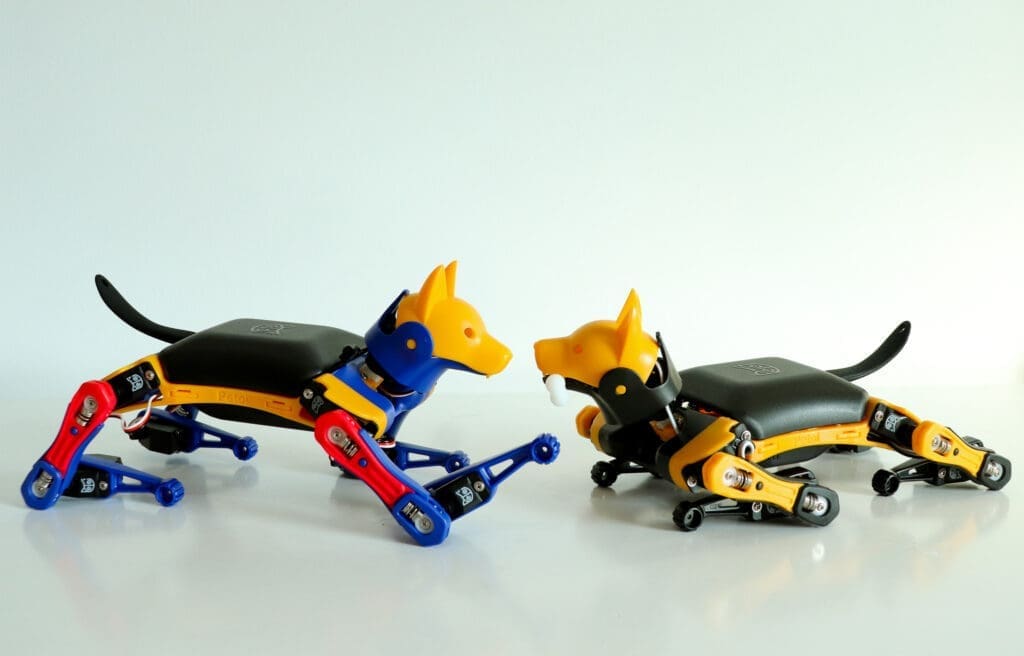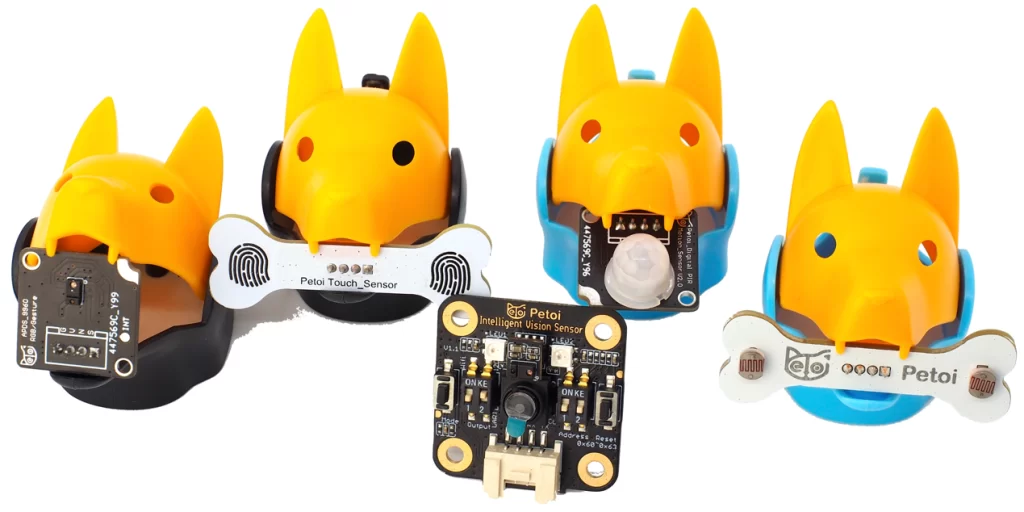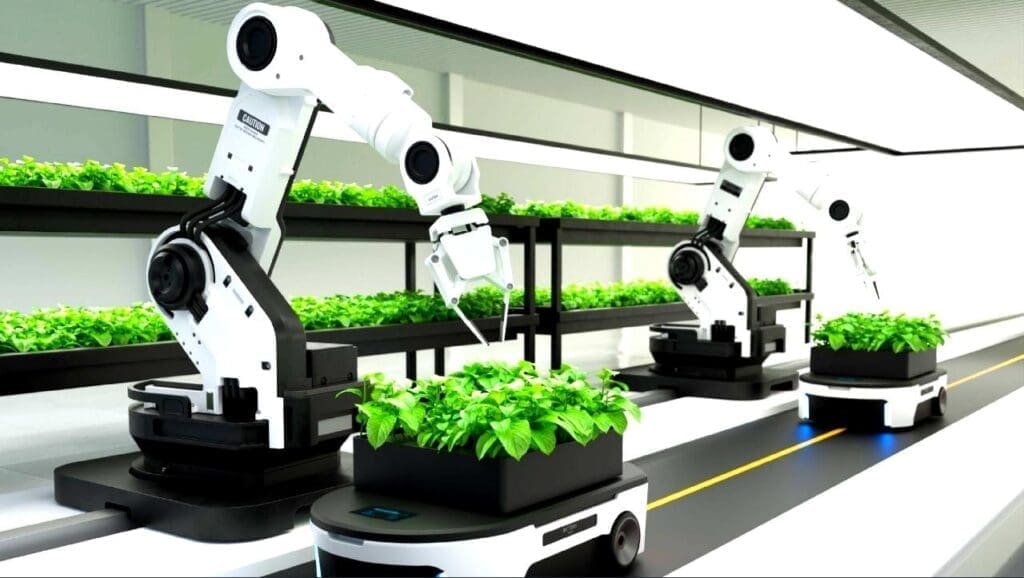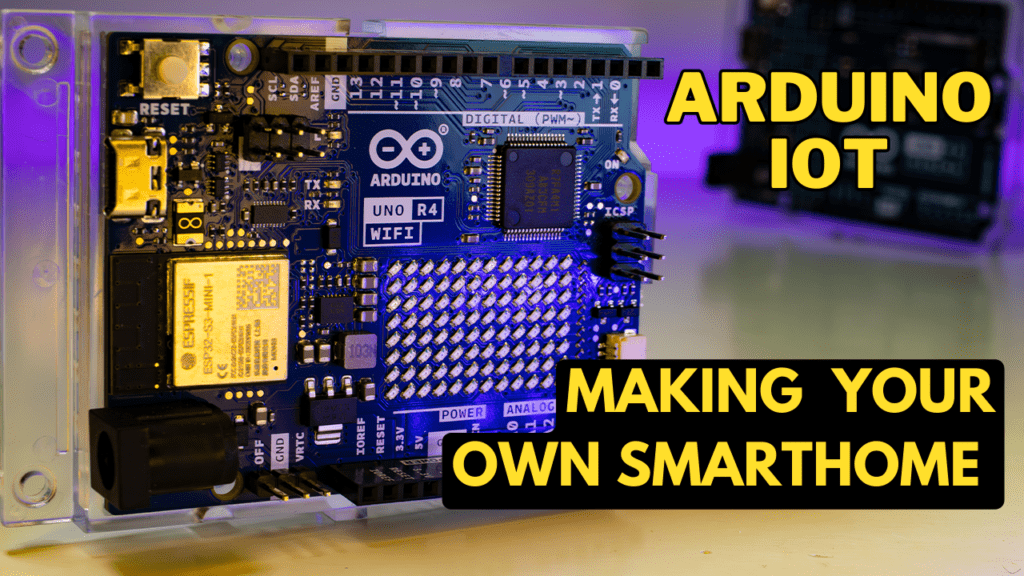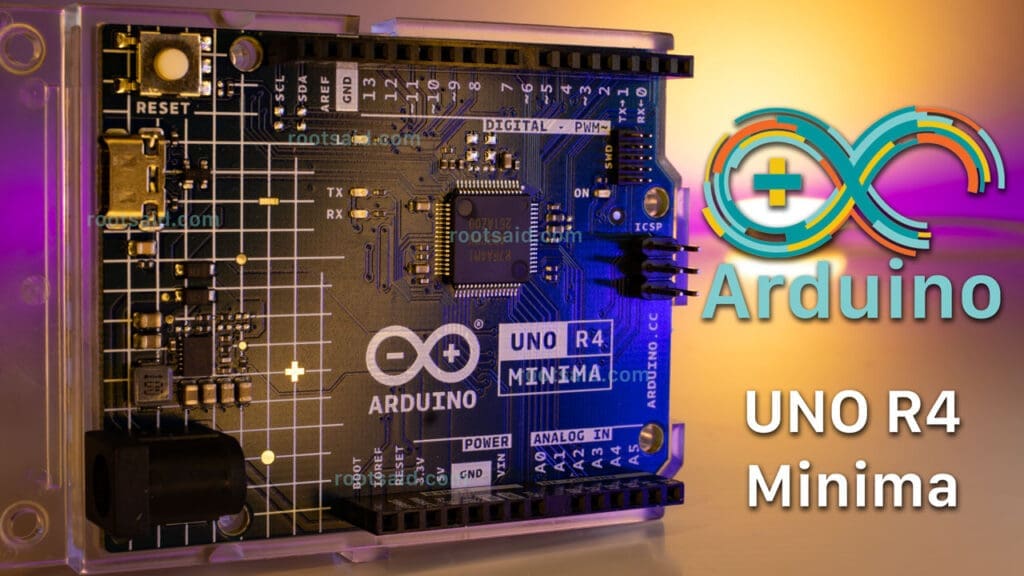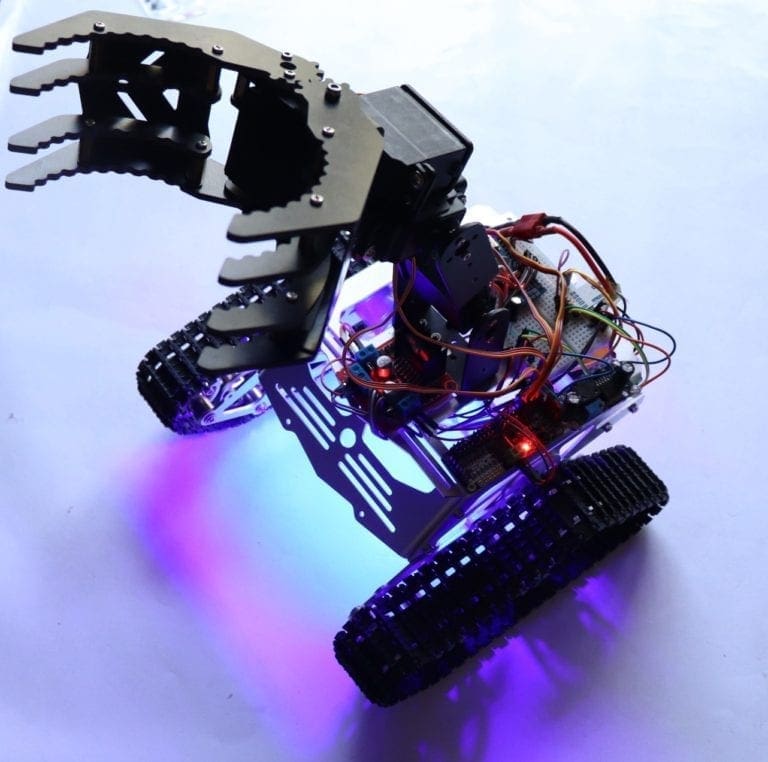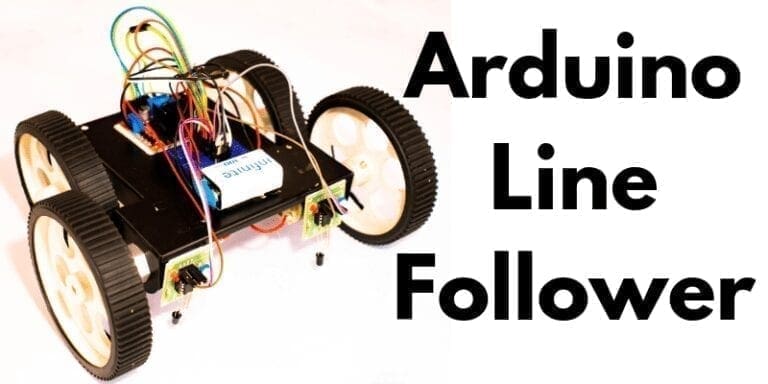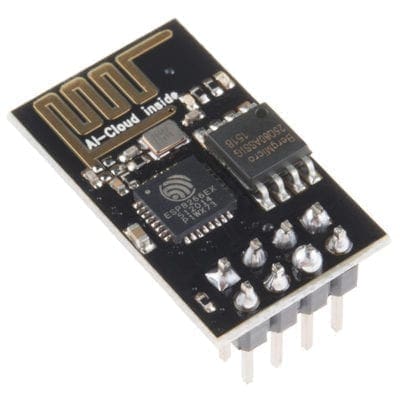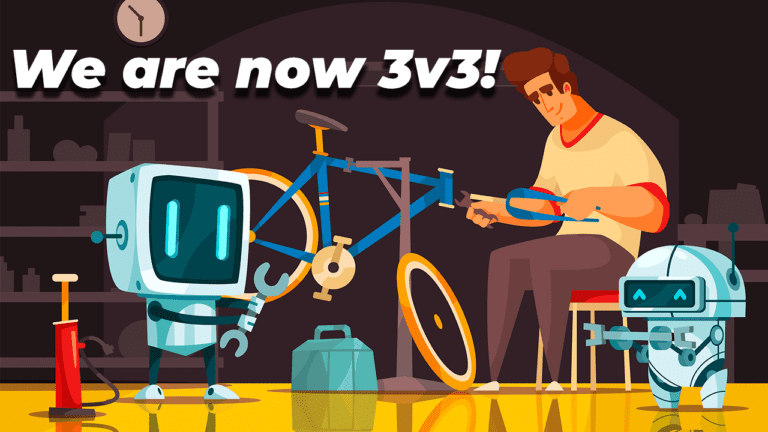Complete Beginner’s Guide to DIY Robotics | Robotics For Beginners
“Hey, kids! Are you looking for a challenging robot project that will help you learn about programming and electronics? Well, look no further. With this easy DIY robotics tutorial, you can build a robot that can do anything from following a line to solving puzzles! Come with me as we build our very own robot. I promise it won’t be too hard or take up too much of your time (unless you like taking things slowly). Let’s get started with Robotics for Beginners!”
Complete Guide to Robotics for Beginners
In this article, we are going to cover the basics of robotics for beginners. If you are someone who has just started with DIY robots and robotics or if you have kids that want to get into robotics at home, then this post is perfect for you! We will guide you through the basics of ‘Robotics for Beginners’ and how to make a robot for kids easily. Robotics can be a great way to keep your child engaged in learning while having fun. So let’s get started building our own robot!!
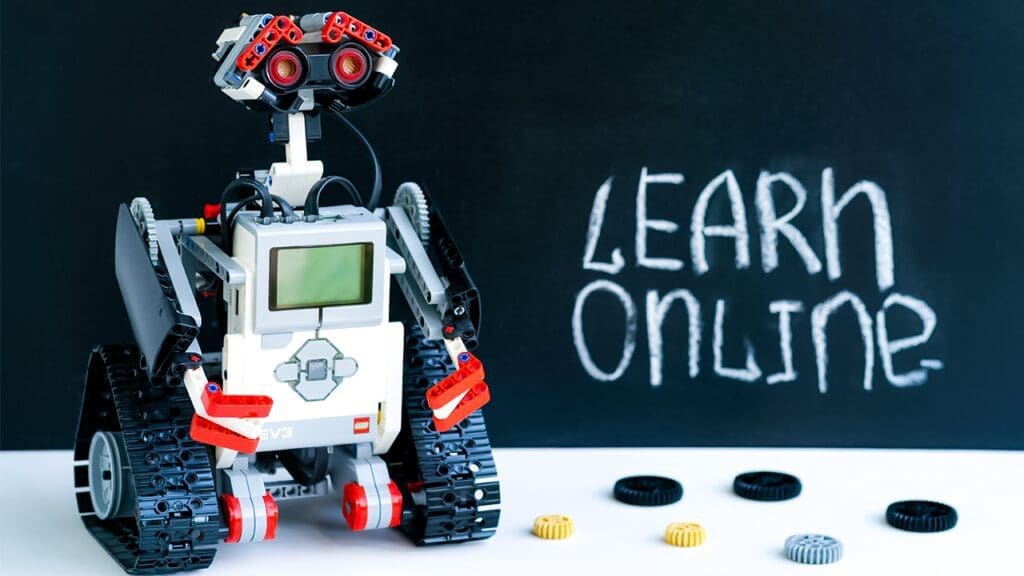
Robots and Robotics
Robots have been around for quite some time now; dating back all the way to 1495 when a man named Jacques de Vaucanson built a mechanical duck. Fast forward to the present day and robots are now being used in many different fields of work, including medicine!
Robotics for Beginners: How To Make A Robot for Kids?
What is Robotics for Beginners? A quick search online will yield dozens upon dozens of resources on how to make a robot at home; but what about robotics for beginners? Free robotic courses can be found all over the Internet – such as MIT’s Introduction to Computer Science and Programming course or their introduction to C++ programming class (which has been taken by more than 100000 students already!). However, these advanced classes may not exactly be suitable learning materials if you have never had any experience with building homemade robots before.
In this article, we are going to cover the basics of robotics and how you can build your own robot at home.
YouTube Channel for Learning DIY Robotics Freely And Effectively!
If you are a beginner looking to learn how to make your own robot at home, then I would suggest heading over to our YouTube channel.
Start Learning Robotics for Free Now!
We offer some great videos on learning DIY robotics freely and effectively; check out our playlist here. RootSaid is an online community of people just like yourself who want to help others to make awesome projects, Robots, and code social good.
What is a Robot?
A robot can be defined as an autonomous device that automatically performs tasks. For the most part, robots are machines programmed to complete various actions over and over again in a specific way by utilizing artificial intelligence or something similar.
Robotics for Beginners | How to Make a Robot for Kids?(Opens in a new browser tab)
How does a robot work?
Robots can be broken down into three different parts: the body, power source, and software.
The Body
This part of a robot is what comprises all of its moving parts. It is also where all of your sensors will go (see below). The types of bodies that you can create are nearly endless; anything from humanoid robots to something as simple as a ball with wheels on it counts! A lot goes into making sure that your robot’s body moves in just the right way, and if this isn’t done correctly then you run the risk of having an inferior product when everything has been said and done.
The Power Source
While there are many methods for powering your little creation such as solar panels or even batteries, one method that is becoming more and more popular in the DIY robotics scene is microcontrollers. Microcontrollers can be thought of as a small computer that runs your robot; it will house all of your sensors, motors, CPU (Central Processing Unit), etc., basically everything!
Software
This part ties into both the body and power source parts of robots since they work together to create an entire product. Without software, you have no way to control what your machine does or how it works. While this may not seem like such a daunting task at first glance, remember that every single aspect must be programmed specifically so that things run smoothly without any errors on either end. When deciding which route you want to take for programming we suggest checking out Free Programming Books.

What are the Parts of a Robot?
Here’s a list of exactly what you will need to build your own:
1. Body
This is where all of your electronics and moving pieces will go; think motors, sensors, etc. The chassis of our robot plays a huge role in determining its overall size and weight, as well as how much it will be able to carry.
2. Sensors
These little devices help robots detect different things based on their design/purpose such as infrared distance measuring modules which tell our machine when they come into contact with another object.
3. Microcontroller
Microcontrollers act as the “brain” for your robot and are used to control all of its moving parts (motors, sensors, etc.) through software that you write yourself! Free Programming Books – Check out Free Programming books from RootSaid’s YouTube Channel: Click Here To View Our Playlist!

Controllers such as Arduino and Raspberry Pi are open-source development platforms used for building digital devices and interactive objects that can sense and control physical systems. The microcontroller is the one part that will make a machine come alive!
What is Arduino?
Arduino is an open-source electronics prototyping platform based on flexible, easy-to-use hardware and software. It’s intended for artists, designers, hobbyists interested in creating interactive objects or environments.
What is Raspberry Pi?
Raspberry Pi is a credit-card-size computer that plugs into your TV and keyboard. It can do everything you expect a desktop computer to do, from browsing the internet and playing high-definition video, to making spreadsheets, word-processing, and playing games.
4. Motors

A motor is used for creating movement within our robot by converting electrical energy into kinetic energy.
Different Types of Motors – There are several different types of motors that you can use when building your own robot. Here is a quick list:
DC Motors
These come in two flavors, brushed and brushless; Brushed ones contain carbon brushes that wear out after time whereas the more expensive (and better) ones utilize Hall-Effect Sensors for speed control without wearing out as fast.
Servo Motors
These are very common in hobbyist robotics and utilize a control signal so that you can set the exact angle/position for your machine to move.
Stepper Motor
Another type of motor, steppers allows you to move things very precisely with much less energy than what standard servos require!
5. Power Source for a Robot
There are many different types of power sources you can use when building your own robot. Here is a quick list:
Solar – This option requires no electric input and has been used as the main source for powering robots since they were first invented!
Battery – A common choice among DIY enthusiasts, batteries come in all shapes and sizes to suit whatever need you to have for them!
Power Adapter – This is the most common choice for powering your own projects and comes in many different forms such as a wall plug, desktop power supply, etc.
How to choose the best Robot Chassis?
The chassis of our robot plays a huge role in determining its overall size and weight, as well as how much it will be able to carry. Here are some things you should look out for when selecting your own:
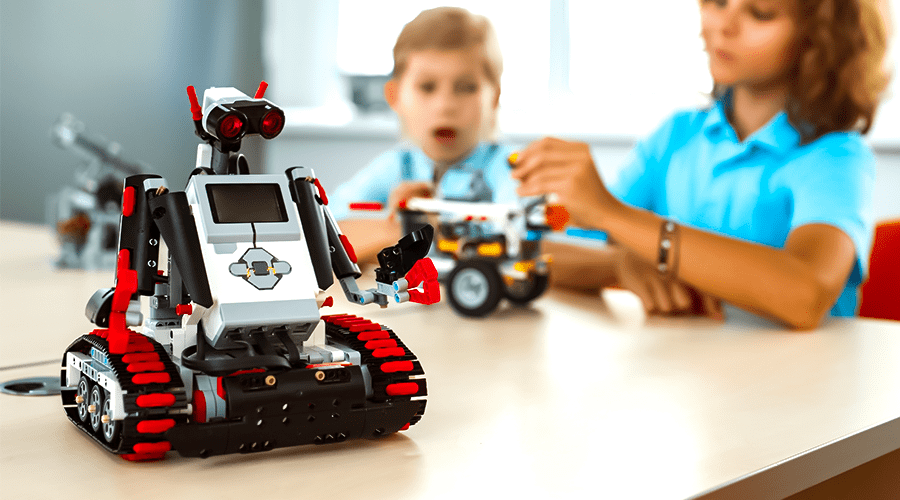
Weight Capacity – If you plan on adding very heavy attachments or components later down the line then this is something that needs to be taken into consideration early!
Size – How big/small do you need your machine to be? This question can easily impact many different areas such as where we place all of our electronics so they fit nicely within the confines of your creation.
Wheels – Depending on what you intend to do with your robot, some may have two or four wheels. If two is your choice, then you will need to make sure that the wheels are spaced far enough apart to balance the robot when moving around.
Tracked Wheels and Tyred Wheels – If you plan on using the robot to traverse over rougher terrain (such as dirt or grass) then it will be important that your wheels/tires are tall enough for them not to get stuck in any holes or depressions.
Wheeling Material – What material is used for the tire? Rubber and plastic work great, but if they become too low on tread there can be problems with movement!
DIY Arduino Robotics Programming Guide
How To Use an Arduino – This beginner tutorial playlist shows you exactly how to set up your very first project! Once this is completed (which should take about 20 minutes) then continue on to learn more advanced functions such as serial communication and using libraries within code.
You’ll also have access to a library of example projects made specifically for beginners that will inspire creativity while teaching new skills along the way! Practice Makes Perfect – Get Comfortable With Programming Languages by following RootSaid’s YouTube Channel: Click Here To View Our Playlist! FREE!
Arduino Tutorial for Beginners – The Ultimate Guide to Master It!(Opens in a new browser tab)
Robotics for Beginners – Can we make Robots without Microcontrollers?
Yes, you can, there are several different types of robots that do not require a microcontroller to function. What we have in our list above are some of the most common ones; however, it is always good to make sure that your project functions properly before spending money on something extra!
What kind of batteries should I use?
There are many kinds and sizes depending on what robot or electronic device you intend to power with them. Here are three of the more popular options: Lithium Polymer (LiPo) – These rechargeable batteries come in all shapes and sizes for whatever need you may have! They provide longer run-time than alkaline/rechargeable AAs but cost much more too. Alkaline – This is the most common type of battery you will find anywhere and has a long-running time. Although they are rechargeable, many people prefer to use them as disposable due to their low price tag. Rechargeable AA (NiMH) – These give good run-time for your money and can be recharged at any point in order to save some cash!
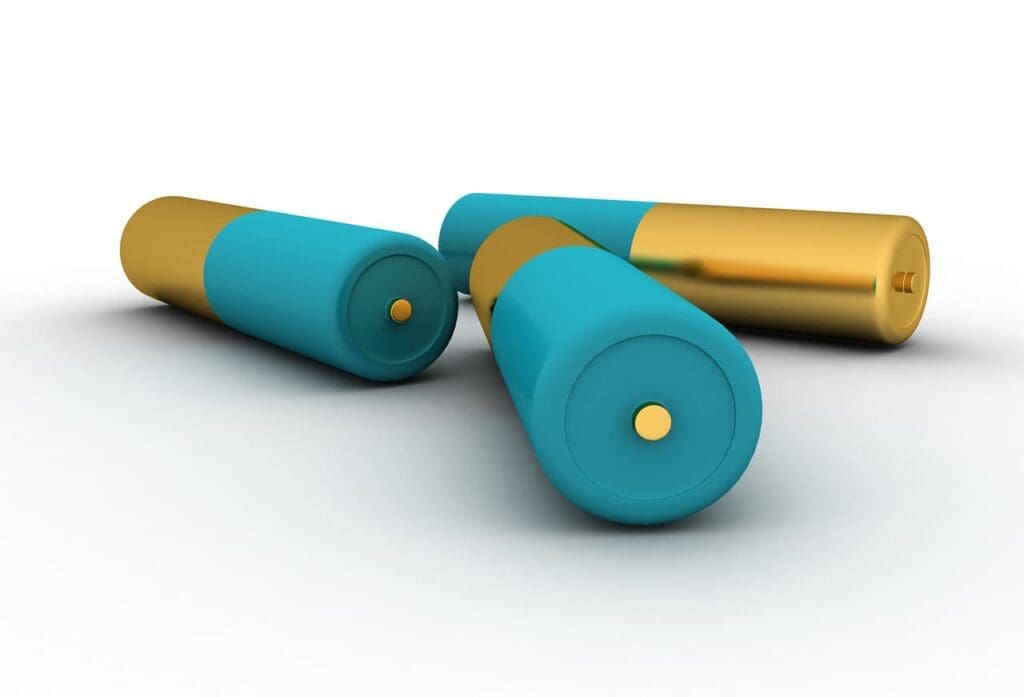
1. Lithium Polymer Battery
These provide high voltage and a long-running time for your project. They are rechargeable and capable of producing large currents, which is great if you need to run something power hungry!
2. Alkaline Battery
This can be used in place of the LiPo battery provided that it has at least three times as much capacity to prevent the risk of damage or injury from overloading. You will also need some kind of protection circuit (usually included with electronic boards) on your robot so that when these batteries become drained they automatically disconnect instead of continuing to drain until fully discharged (which could result in fire)!
3. Rechargeable AA Batteries
These work well enough but do not pack nearly as much punch to other options such as the LiPo. They are rechargeable and can be used in conjunction with a charging circuit to save money in the long run!
Do I need special tools to make a Robot?
The answer is both yes and no, there are some tools that you will definitely want to use but others that you may not even know about yet! Here is a list of things we think everyone should have:
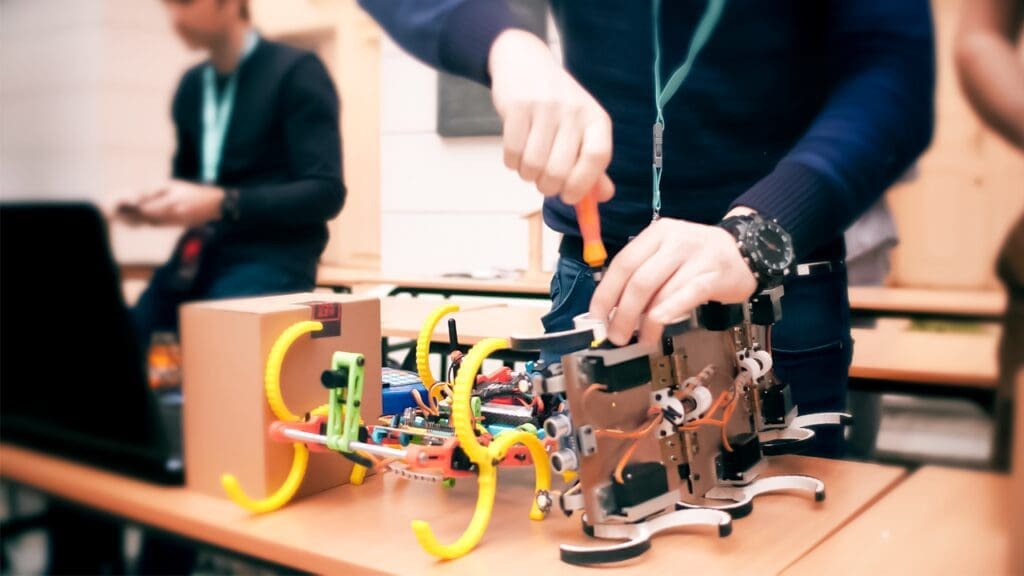
1. Soldering Iron
This allows for direct connection between electrical components which results in stronger connections than just using wire alone.
2. Hobby Knife
This is great for making precise cuts where a wire stripper can’t reach or when you need to remove excess material from your project!
3. Wire Cutters/Strippers
These are essential if you plan on building anything with electronics since they allow the removal of insulation without damaging wires and keep them at their intended length.
4. Microcontroller Board Holder
Although not completely necessary, this tool makes life much easier than trying to balance a microcontroller/PCB.
5. Soldering Iron Holder
This is a very useful tool and makes life so much easier when working on projects that require soldering!
6. Helping Hands
Another one of the many tools/gadgets you can get to make your work easier; these little guys hold components in place which allow both hands-free movements during jobs. There are also smaller ones available if you have limited space or need it for travel purposes.
What else do I need to get Started with Robotics for Beginners?
Here are some other things we think everyone should know about: Multimeter – This device measures current, voltage, resistance, continuity, and diode test within an electrical circuit (it’s basically like a multi-tool). Digital Storage Oscilloscope (DSO) – This is a more advanced tool that allows you to view an in-depth analysis of your project. It can be used for troubleshooting, voltage and signal measurements, and much more! Programmable Logic Controller (PLC) – These bring the ability to control processes or machines using logic functions such as AND/OR gates which are built into one small package
What are the Best Robotics for Beginners Learning Videos?
If you’re not afraid of taking a peek into DIY robotics videos then Free Programming Books channel has some great tutorials for learning Arduino boards that can be used to program your robot! Here are our top picks: –
These DIY Robots are Really Awesome
Google Mobile ALOHA: The Future of Household Robotics
Robotic Revelations: 36 Fun Facts About the World of Robots 2024
Transforming Learning through Robotics with mBot 2 Neo – Robot Kit for Beginners
Nature’s Blueprint: Bio-Inspired Robots Redefining Innovation
Best DIY Affordable Arduino Robot Dog | Get your own Boston Dynamics Spot!
Bittle: The Robot Dog Companion Now with Supercool Sensor Pack
Next-Generation Robots – The New Era!
As technology continues to advance at an unprecedented pace, the next generation of robots is…
Let’s Use Arduino To Take Charge Of The Bittle| Petoi Bittle The Arduino Programmable Robot
Hey, guys welcome back. How about making a DIY Arduino robot dog? What if the…
Petoi Bittle – The Robot Dog Inspired by Boston Dynamics Spot
Hey guys, are you interested in doing a robot dog project? Then, I just wanna…
Engineers Create Perching Bird-Like Robot
Latest Robotics Innovations | Robots you don’t want to miss in 2022
Complete Beginner’s Guide to DIY Robotics | Robotics For Beginners
How To Make A Robot For Beginners Step By Step (ROBOTICS FOR BEGINNERS) by RootSaid Free Programming Books Click here: View this playlist now! There will also be other free programming courses created soon 🙂 Subscribe Today
Start Learning Robotics for Free Now!
Awesome Arduino Projects you DONT WANNA MISS!
Here is a list of the creative Arduino Projects implementing newer sensors and boards, which can be followed easily and are really interesting to implement. Even if you are a beginner and just started learning Arduino-based projects, following these tutorials will be easy. All of the below Arduino-based projects are well-explained step by step, with detailed tutorials on how to get started from scratch.
DigiSpark as HID Keyboard – Complete DigiKeyboard Commands Explained
Building a Home Automation using Arduino and Arduino IOT Cloud | Arduino IOT Projects
We Have the New Arduino UNO R4 Minima | Everything You Need to Know
Let’s Use Arduino To Take Charge Of The Bittle| Petoi Bittle The Arduino Programmable Robot
Hey, guys welcome back. How about making a DIY Arduino robot dog? What if the…
DIY Motion Triggered Halloween Prop using Arduino/Digispark | Halloween Project 2022
Control your Home Devices using Arduino and your Favorite Personal Assistant!
Introduction In the previous video, we build an Alexa-controlled Door Locking System. So many people…
Give me more Awesome Projects!



